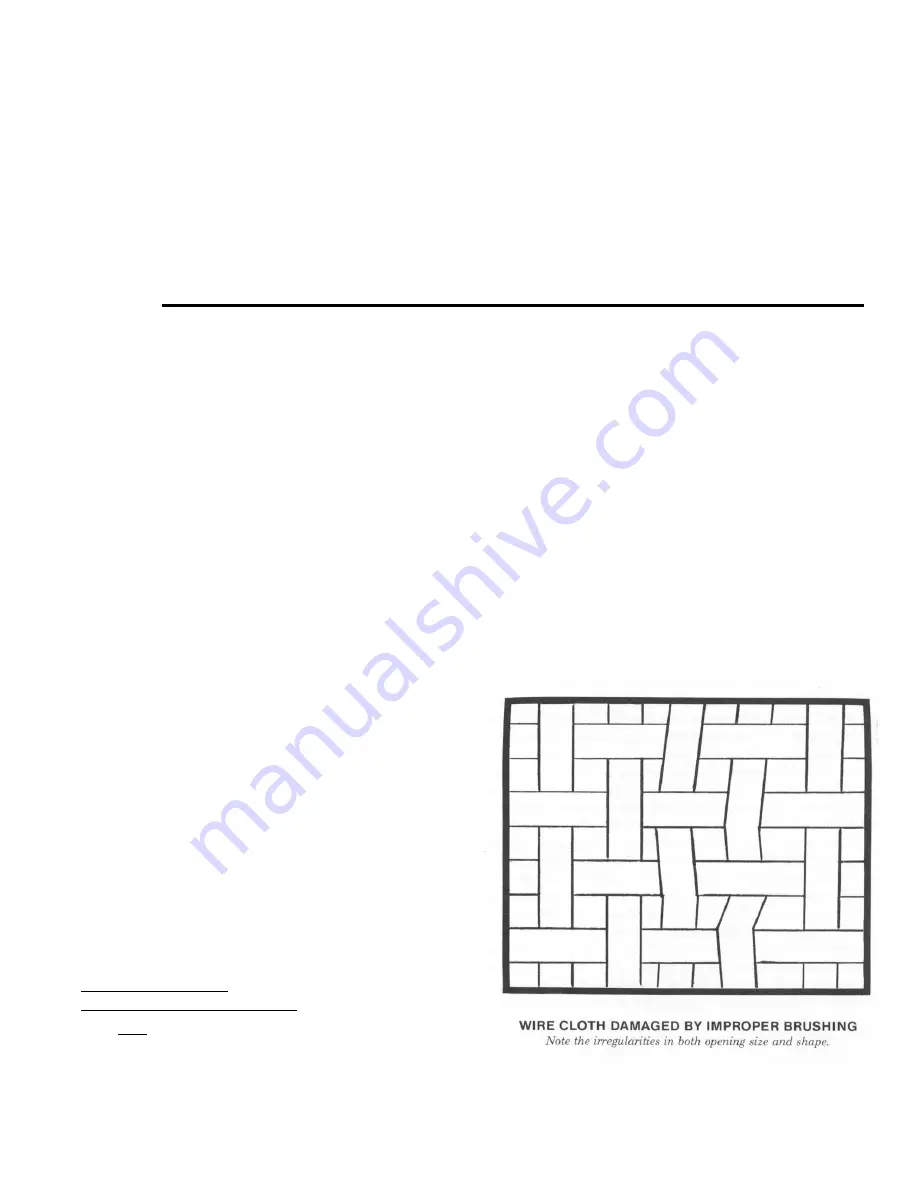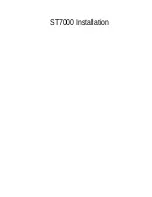
Care should be exercised in the
analyzing the data in relation to the length
of time the test was run. If the sample
contains a large amount of elongated or
near- size particles, the test results can be
misleading. The longer the sieving interval,
the greater the opportunity for these
problem particles to pass through the
sieve’s openings. Ideally each fraction
should be inspected microscopically after
sieving to determine the integrity of the
sieve cut point.
Table 6 lists many of the ASTM
published standards on sieve analysis
procedures for specific materials or
industries.
CHAPTER7
SIEVE CARE AND CLEANING
Test sieves, like any other piece of
analytical laboratory equipment, require
regular care to maintain their performance
standards. Sieves should be kept clean and
dry at all times, and stored either in the
cardboard carton provided or in a suitable
cabinet. The wire cloth must be taut and
free from variations in opening size. For
this reason, cleaning procedures must be
clearly
delineated
as
part
of
a
comprehensive sieving program.
2
Test sieves should be cleaned
ultrasonically on a regular basis.* For some
installations, this may be done at the end
of a shift or at the end of a week, but must
be done regularly to assure accurate
sieving results. The sieves should be
immersed in an ultrasonic cleaner filled
with a solution of a mild detergent and
water. Prior to reuse, ensure that the test
sieves are dried thoroughly. Ultrasonic
cleaning prevents the buildup of particles
trapped in the sieve openings and prolongs
the useful life of the sieve. Between test
clean-up, brushing of the mesh, sizes 100
and coarser, is recommended. For best
results, use a nylon bristle paint brush with
the
bristles
cut
to
a
length
of
approximately 25.4 mm (1"). The sieve
openings should be brushed from the
underside only with a gentle circular
2
*
Do NOT ultrasonically clean precision electroformed test
sieves. Refer to the Handling and Use Instructions on the
sieve jewel case.
motion. Vigorous brushing will distort the
sieve openings and reduce the effective life
of the sieve. Particles lodged in the sieve
openings should never be removed with a
sharp object. These particles should be
removed in an ultrasonic cleaner only.
Brushing should be avoided on sieves finer
than 100 mesh, as the fine wires are more
likely to bend, distort or even break.
Brushing can often loosen the wire cloth;
the finer mesh sizes are most susceptible
to this damage.
Similarly, cleaning sieves with a
compressed air jet is common, but this can
Summary of Contents for VariSifter VS1000
Page 2: ......
Page 32: ......
Page 34: ...Table 2 ...
Page 35: ...Table 3 ...
Page 36: ...Table 3 cont d ...
Page 37: ...Table 4 ...
Page 38: ...Table 5 ...
Page 39: ...Table 6 ...
Page 46: ......
















































